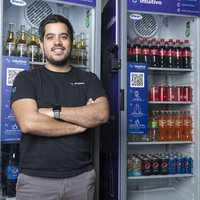Artificial intelligence & robotics
Furong HUANG
Developing models that can perform tasks safely and efficiently in unseen environments without human oversight.

Latin America
José Benítez
Uses artificial intelligence and computer vision to turn display refrigerators into autonomous vending machines.

Japan
Tamir Blum
An agricultural robot that uses lunar explorer technology to compensate for labor shortages.

Korea
Gangwon Jo
Making it easier to build and utilize AI infrastructure at scale.

Latin America
Felipe Elgueta
Its AI automatically schedules medical appointments and avoids queues for the most vulnerable people.
